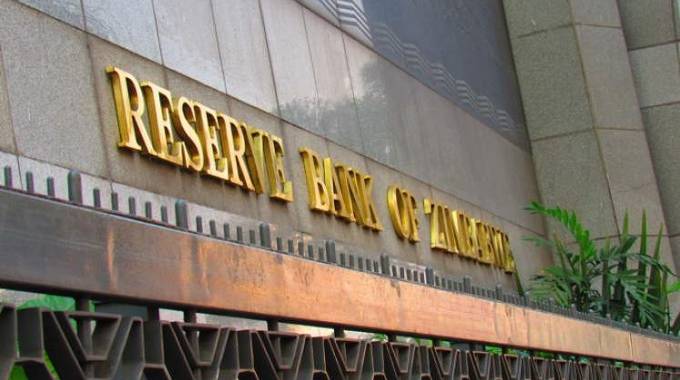Champs League, L’Equipe, DeMbare, The Herald, big brands, common denominators

Robson Sharuko
Senior Sports Editor
WHEN the draw for the UEFA Champions League is conducted today, the world’s richest inter-club football competition, which dished out a staggering US$309m to its last two finalists, will mark 65 years of existence.
Six qualifiers, whose identities were set to be finalised last night, will join 26 other clubs, in the draw for the group stages, in Switzerland today.
Exactly 65 years after the first matches in the tourney, then known as the European Champions Cup, were played, the enduring appeal of the competition, knows no bounds.
There is now a record number of participants while television viewer-ship figures have sky-rocketed.
As the tourney marks yet another milestone, in a journey which has seen it develop from just 16 clubs to 78 teams, some will also take time to remember its humble beginnings in 1955.
That means celebrating the vision of trailblazing French sports journalist, Gabriel Hanot who, as Editor of French daily sports newspaper, L’Equipe, played a leading role in the establishment of the tournament.
Backed by the newspaper’s owner, Jacques Goddet, and his colleagues, Jacques de Rayswick and Jacques Ferran, Hanot started using L’Equipe’s influence to petition UEFA for the establishment of the tourney.
And, in September 1955, the first 16 clubs — AGF Aarhus, Anderlecht, Djurgardens IF, SC Rot-Weiss Essen, Gwardia Warszawa, Hibernian, AC Milan, MTK Budapest, FK Partizan, PSV Eindhoven, SK Rapid Wien, Real Madrid, Stade de Reims, FC Saarbrücken, Servette and Sporting CP — entered the competition.
By the time the final was played, in Paris, in June, the following year, Real Madrid and Marshall Munetsi’s Stade de Reims were the last clubs standing, with the Spanish giants winning a classic final 4-3.
Hanot, with the help of L’Equipe would also be the brains behind the Balon d’Ór while, in the same paper’s newsroom, the idea of the Tour de France, the world’s most prestigious cycling event, was first mooted.
The names of both Hanot and L’Equipe remain bonded to the UEFA Champions League, especially as it marks the 65th year, of the season the tournament started.
However, very little appears known about the influential role — directly or indirectly — this newspaper, and its cricket-playing former Sports Editor, played, in the formation of one of the country’s iconic sports brands.
Ironically, this year, marks the 60th anniversary of the year when Lennox Brown, then Sports Editor of this newspaper, started to provide the influential voice, for those who were leading the campaign, to have a multi-racial football league in this country.
Without Brown’s spirited support, many argue, it’s very unlikely the gamble by those, who wanted football to break the racial barriers in this country, would have succeeded.
The black players would probably have kept playing in their SADAFA zonal amateur township leagues while the whites would have kept playing in their organised leagues.
The argument by those whites, who received the support, and a powerful voice, by Brown, and this newspaper, was that by having blacks and whites, playing together or against, each other, it was likely to improve the quality of the sport.
And, in 1961, a multi-racial league was formed with Salisbury City and Salisbury United, featuring a number of black players.
However, this league collapsed at the end of 1962.
And, with both City and United also collapsing, the black stars from those two clubs teamed up to come up with a club which they called Dynamos.
The rest, as they say, is history.
The club rose from humble origins to become the country’s biggest, and most successful, football team.
They were also a powerful sporting franchise which, during the pre-Independence period, became a sporting symbol of the fight against white domination in this country.
With 21 league championships, the Glamour Boys have won more league titles than any other club on the Southern African mainland.
Kaizer Chiefs, with 12 league titles, leads the race in South Africa while Nkana have 13 in Zambia, Township Rollers have 16 in Botswana, Ferroviario de Maputo have 18 in Mozambique, Petro de Luanda have 11 in Angola, Black Africa have 11 in Namibia, Matlana have none in Lesotho, Nyasa Big Bulets have 14 in Malawi and Mbabane Highlanders have 13 in Eswatini.
DeMbare are the only Zimbabwean club to reach the final of the CAF Champions League.
Although they have disappeared from the continental inter-club football radar, in the past few years, their pedigree remains intact and, recently, CAF ran a poll, on their Twitter page, asking fans to name the greatest club of all-time, in Africa, which wears a blue kit?
“Which is the GOAT club wearing blue on the continent?’’ CAF asked, giving fans the opportunity to choose from a shortlist of teams — Dynamos, Enyimba (Nigeria), Al Hilal (Sudan) and SuperSport United (South Africa).
Of course, many will always single out Ken Walker, then the floor manager at Tobacco Sales Floor, as the white man who played a bigger role, in the formation of the Glamour Boys.
But, without the foundation, and influential voice, provided by Brown, who encouraged the participation of blacks in the mainstream football trenches of this country, especially in the capital in 1960, it’s very unlikely the racial barriers would have been broken as quickly.
And, it’s likely DeMbare would have been formed, as became the case, in 1963.
Ironically, the first black Sports Editor of this newspaper, the late Alan “Teacher’’ Hlatshwayo, was one of the key figures at the Glamour Boys, during the club’s formative years, distinguishing himself as a player.
Some have chosen to criticise what they claim to be a relationship, between Dynamos and this newspaper, which has, in their accusations, resulted in the Glamour Boys getting lavish coverage at the expense of other clubs.
However, for some, including media practitioner, Johannes Nyamayedenga, this has provided an opportunity for studies at universities.
His dissertation at the Midlands State University looked at how this newspaper profiled the identity of Callisto Pasuwa during his time at DeMbare.
“This study sought to find out how The Herald represented, framed, constructed and re-imaged the personality and credentials of the former Dynamos Football coach, Callisto Pasuwa just before and soon after guiding the Glamour Boys to win a fourth consecutive Premier Soccer League title in 2014.’’










Comments